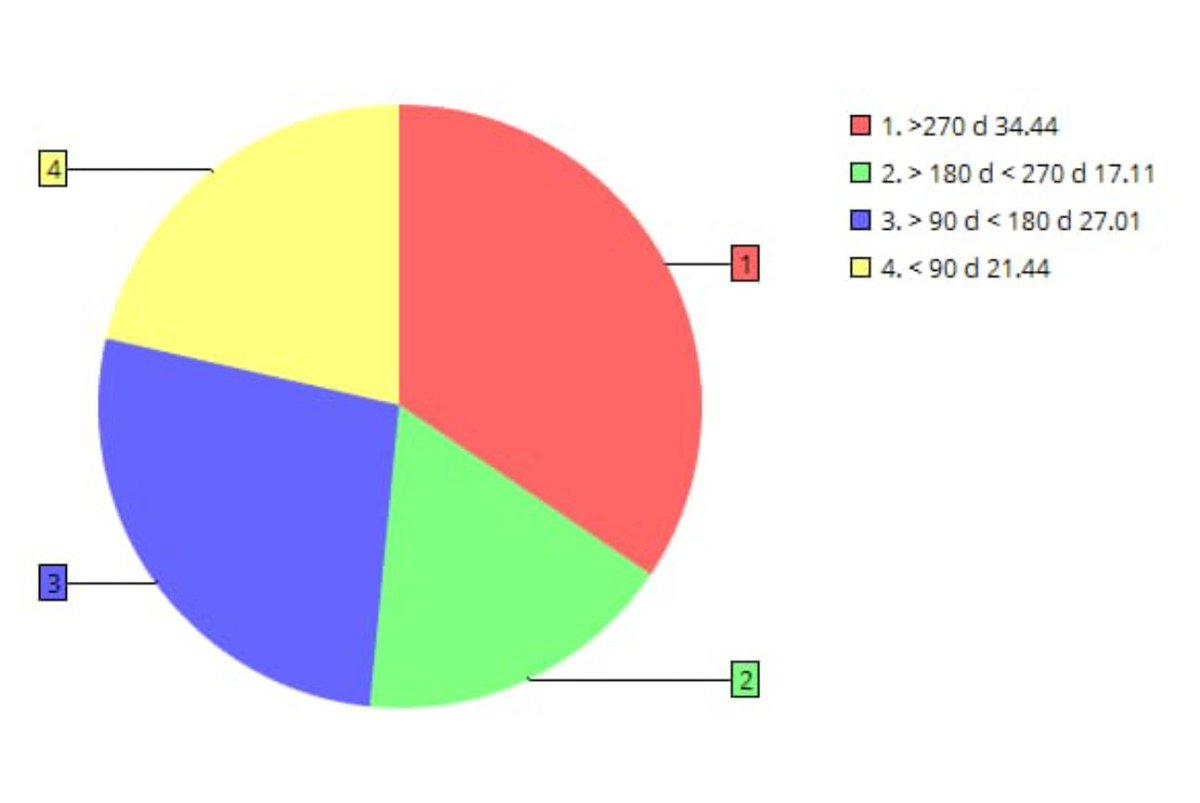How off-mark were the analysts about Yes Bank stock.
Today, share price of Yes Bank crashed to Rs. 71.25 on concerns surrounding financial misreportings by Crompton Greaves Power (CGP). Yes Bank has 13% stake in CGP. The stock was trading at Rs. 400 abt an year back. Thread 1/11
Today, share price of Yes Bank crashed to Rs. 71.25 on concerns surrounding financial misreportings by Crompton Greaves Power (CGP). Yes Bank has 13% stake in CGP. The stock was trading at Rs. 400 abt an year back. Thread 1/11

For many-many years, people cast aspersions on lending practices of Yes Bank and doubted the low NPA numbers it reported quarter after quarter.
All those fears came true post cutting short of Yes Bank's MD, Mr. Rana Kapoor's term by RBI in Sept. 2018. 2/11
All those fears came true post cutting short of Yes Bank's MD, Mr. Rana Kapoor's term by RBI in Sept. 2018. 2/11
Bewildering though, in this entire saga, is the cluelessness of the equity analysts (the supposedly well-informed lot). The level of ignorance was such that even after RBI action, many analysts kept giving 'buy' calls. Below is a list of such misplaced, ignorant calls. 3/11
Sep 2018: TP 425: Macquaire
Despite the uncertainty about RBI accepting the request for an extension to Mr. Rana Kapoor's term, Macquarie guided for a higher target price. Later (in Mar 2019), Macquarie realised it's mistake and gave Yes Bank a double downgrade. 4/11
Despite the uncertainty about RBI accepting the request for an extension to Mr. Rana Kapoor's term, Macquarie guided for a higher target price. Later (in Mar 2019), Macquarie realised it's mistake and gave Yes Bank a double downgrade. 4/11
Sep 2018: TP 378 : HSBC
HSBC Research sounded cautious about the RBI move yet it maintained a 'Buy' rating hoping that 'a decisive step taken by the board to ensure a relatively orderly succession could alleviate currently heightened concerns.' 5/11
m.economictimes.com/markets/stocks…
HSBC Research sounded cautious about the RBI move yet it maintained a 'Buy' rating hoping that 'a decisive step taken by the board to ensure a relatively orderly succession could alleviate currently heightened concerns.' 5/11
m.economictimes.com/markets/stocks…
Sep 2018: TP 400: JP Morgan
Despite being unsure about what view RBI would take on the Yes Bank board’s request of extension of Mr. Kapoor's tenure, JPMorgan stuck to their bullish stance on Yes Bank with an upside of more than 80 per cent. 6/11
m.economictimes.com/markets/stocks…
Despite being unsure about what view RBI would take on the Yes Bank board’s request of extension of Mr. Kapoor's tenure, JPMorgan stuck to their bullish stance on Yes Bank with an upside of more than 80 per cent. 6/11
m.economictimes.com/markets/stocks…
Oct 2018: TP 350 : Motilal Oswal
Motilal Oswal agreed that 'the near term uncertainty will remain till the new management takes charge' yet it believed that 'post sharp correction the stock is trading at reasonable valuations.' 7/11
moneycontrol.com/news/business/…
Motilal Oswal agreed that 'the near term uncertainty will remain till the new management takes charge' yet it believed that 'post sharp correction the stock is trading at reasonable valuations.' 7/11
moneycontrol.com/news/business/…
Oct 2018: TP 430: Investec Securities
Investec Securities believed that 'the market is going to ignore facts and numbers and focus more on news flow and sentiments in the near-term.' They added that 'risk-reward is extremely favourable'. 8/11
business-standard.com/article/market…
Investec Securities believed that 'the market is going to ignore facts and numbers and focus more on news flow and sentiments in the near-term.' They added that 'risk-reward is extremely favourable'. 8/11
business-standard.com/article/market…
Sep 2018: TP 310: Deutsche Bank (DB)
DB made back to back mistakes. First in Sep, 2018 it maintained a 'buy' call saying 'that management is confident on asset quality'. Later in Mar 2019, the bank retained a 'buy' call on Yes Bank with TP of 300. 9/11
financialexpress.com/market/yes-ban…
DB made back to back mistakes. First in Sep, 2018 it maintained a 'buy' call saying 'that management is confident on asset quality'. Later in Mar 2019, the bank retained a 'buy' call on Yes Bank with TP of 300. 9/11
financialexpress.com/market/yes-ban…
Sept 2018: TP 375: Edelweiss Financial (EF)
EF maintained that 'at current levels the stock is available at 1.6-1.7 times multiple and because of franchise strength, the overall return profile over the long-term would still be sustainable.' 10/11
cnbctv18.com/finance/buy-ye…
EF maintained that 'at current levels the stock is available at 1.6-1.7 times multiple and because of franchise strength, the overall return profile over the long-term would still be sustainable.' 10/11
cnbctv18.com/finance/buy-ye…
However, to balance out the observations made in this post, let me also state that there were some brokerage house who raised a red flag when RBI took action against Mr. Kapoor. Citi and IDFC Securities had cut the target price on Yes Bank. 11/11
@kayezad @ActusDei @_soniashenoy @andymukherjee70 @invest_mutual @BMTheEquityDesk @dmuthuk @rohitchauhan @contrarianEPS @shyamsek @chokhani_manish @pvsubramanyam @BalakrishnanR @Sanjay__Bakshi @TamalBandyo @CafeEconomics @menakadoshi @latha_venkatesh @AmolPlanRupee
@deepakshenoy @dugalira @Iamsamirarora @SunilBSinghania @mrinagarwal @IamMisterBond @NagpalManoj @SalariedTaxpay1 @YashwantSinha @ayushmitt
• • •
Missing some Tweet in this thread? You can try to
force a refresh









